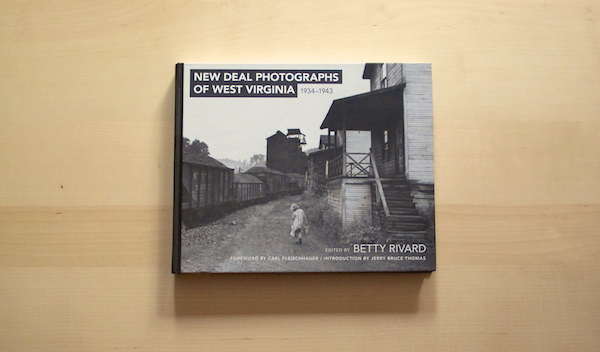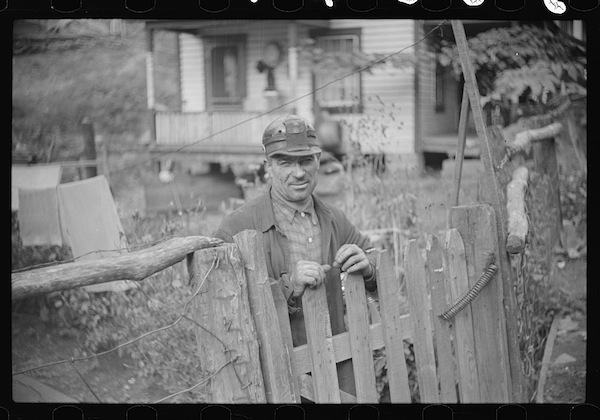 Hardcover| 8 x 9.5 inches | 240 pages | 150 black and white photographs
West Virginia University Press, 2012 | $29.99
Hardcover| 8 x 9.5 inches | 240 pages | 150 black and white photographs
West Virginia University Press, 2012 | $29.99
Between 1934 and 1943, ten photographers: Elmer "Ted" Johnson, Walker Evans, Ben Shahn, Arthur Rothstein, Carl Mydans, Edwin Locke, Marion Post Wolcott, John Vachon, John Collier, Jr., and Arthur Siegel, visited West Virginia as part of Roy Stryker's Farm Security Administration (FSA) photographic unit. The FSA's primary attention during this time was on the northern and southern coalfields, the three subsistence homestead communities (Arthurdale, Eleanor, and Tygart Valley), and two wartime assignments in Nicholas and Mason counties.
What Rivard offers in this beautifully presented book, is a collection of images by photographers whose work I know well of West Virginia at a time I never knew. I'm fascinated with how others see my home state. None of these photographers are from West Virginia, yet they managed to capture its essence, its livelihood. Perhaps one of the things I appreciate most about these pictures is that they were made at a time when photographs weren't nearly as a prevalent as they are today (Instagram, Facebook and the like). Unlike the War on Poverty images of Appalachia, these pictures were made with a different intent. I sense a true collective effort to document the people and stories of West Virginia when I look at these photographs and think about the photographers who made them. Rivard notes that, "The photographs in this book offer professional fine art photographs in support of these memories, snapshots, and stories."
She continues:
"It is beyond the scope of this book to explore why, especially in the past fifty years, the state became a poster child for a culture of poverty. Unfortunately, the media have focused on poverty and exaggerated backwoods-type images as representative of West Virginia. These images have left terrible scars on a number of people who have grown up in the state. They also continue to bring harm through the perceptions that some outsiders have formed of the state and its citizens."
Rivard does a more than fair job of including images from a variety of the photographers as well as the regions covered. As a Mingo County native, I was somewhat disappointed to not see any photographs of Williamson or outlying areas included in the Southern Coalfields section, given Mingo's rich coal heritage and importance in the labor movement. But I admit my bias and am including an image (not in the book) by Ben Shahn made in Williamson in 1935. Logan and McDowell counties are well represented in pictures by Ben Shahn and Marion Post Wolcott.
New Deal Photographs of West Virginia is a brilliant book, extremely well edited and designed. The photographic reproductions are sharp and well printed and with every image, the Library of Congress negative file number is included, which makes finding them online incredibly easy. I can only hope for a second volume.
Betty Rivard is an award-winning fine art landscape photographer. She has researched and coordinated three exhibits of FSA photographs of West Virginia and contributed to articles about the FSA Project to Wonderful West Virginia, Goldenseal, and West Virginia South magazines. She is a Social Worker Emeritus and traveled to every county in West Virginia during her 25-year career as a social worker and planner with the state. Rivard's photography portfolio can be seen here.
Here are a few of my favorites from New Deal Photographs of West Virginia:
1. Wives of coal miners talking over the fence. Capels, West Virginia. Marion Post Wolcott. September 1938. LC-USF34-050260-E. 2. Miner (Russian). Capels, West Virginia. Marion Post Wolcott. September 1938. LC-USF33-030077-M1. 3. Men in Sunday clothes with miners' clubhouse in the background. Omar, West Virginia. Ben Shahn. October 1935. LC-USF33-006200-M1. 4. Coming home from school. Mining town. Osage, Scotts Run, West Virginia. Marion Post Wolcott. September 1938. LC-USF34-050352-E.
Very special thanks to Elaine McMillion, director of Hollow: An Interactive Documentary, for arranging a review copy of New Deal Photographs of West Virginia.




